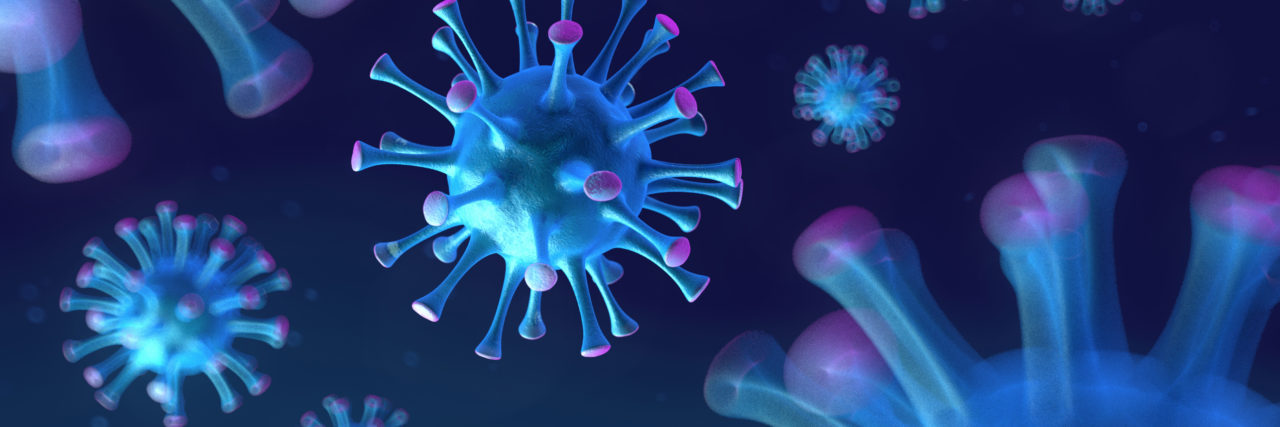Doctors Report People in Their 30s and 40s With COVID-19 Are Having Strokes
Editor's Note
Join The Mighty’s Coronavirus group to connect with other Mighties living through the pandemic. Read the latest updates, share helpful tips, or give and receive virtual support.
Doctors are now reporting cases where the coronavirus (COVID-19) may be causing blood clots and consequently, strokes in a small number of people in their 30s and 40s. These young and middle-aged patients, some who did not know they had COVID-19, were “not otherwise terribly ill,” CNN reports.
“The virus seems to be causing increased clotting in the large arteries, leading to severe stroke,” Dr. Thomas Oxley, a neurosurgeon at Mount Sinai Health System in New York, told CNN. “Our report shows a seven-fold increase in incidence of sudden stroke in young patients during the past two weeks. Most of these patients have no past medical history and were at home with either mild symptoms (or in two cases, no symptoms) of [COVID-19].”
For weeks, doctors have been seeing mysterious blood clots in some COVID-19 patients. Blood clotting is a risk for any critically ill patient, especially if they are immobilized and on a ventilator. But an early study suggested a higher rate of blood clotting in COVID-19 patients compared to patients with respiratory failure who were not infected, according to WebMD.
“We still need more controlled data, but based on clinical observations and the few studies that have been published, it looks like thrombosis [blood clotting] is more common in these patients,” Adam Cuker, MD, a hematologist and associate professor of medicine at the Hospital of the University of Pennsylvania, told WebMD.
Since the outbreak of COVID-19, experts have learned that the virus causes more than respiratory symptoms for patients. Along with telltale signs such as a fever, cough and shortness or breath and severe difficulty breathing in serious cases, research suggests COVID-19 can lead to a wide range of other symptoms. These symptoms may include digestive issues, pink eye, sudden loss of smell or taste, and in rarer cases, heart and neurological issues.
A recent study published in JAMA Cardiology suggested that some patients can experience heart symptoms due to COVID-19 that may mimic a heart attack. The small study of 187 COVID-19 patients in China found that about 20% of those hospitalized showed signs of heart damage, likely related to SARS-CoV2 infection. Many of these patients did not have any underlying heart disease, and those who presented with heart problems had a more severe course of illness.
The CDC highlighted that confusion, disorientation or lethargy can be signs of a severe SARS-CoV2 infection. A New York Times report indicated that neurologists are finding that in rare cases, the virus can impact the brain in other ways as well. Some COVID-19 patients are admitted to the hospital with an altered mental status, which can include loss of speech, seizures, inability to recall basic information and staring off into space. The cause of these issues isn’t clear, but it could be due to inflammation in the brain or a lack of oxygen in the bloodstream.
What Are the Symptoms of COVID-19?
From the beginning, the Centers for Disease Control and Prevention (CDC) listed three major COVID-19 symptoms that could appear anywhere from two to 14 days after exposure to COVID-19:
- Fever
- Cough
- Shortness of breath
Later, the CDC added additional symptoms that are associated with severe cases of COVID-19 and warrant emergency medical attention. These symptoms included:
- Persistent difficulty breathing
- Chest pain or pressure
- Bluish lips or face
- Confusion or lethargy
A World Health Organization (WHO) report from February based on more than 55,000 confirmed COVID-19 cases in China found that 88% of patients had a fever, 68% experienced a dry cough and nearly 19% had shortness of breath. A fever (and chills) help heat up your body so your immune system can fight off the virus, while the other recognized symptoms point to respiratory distress.
What Are the Atypical Symptoms of COVID-19? Read here.
Getty image by FotoMaximum.

